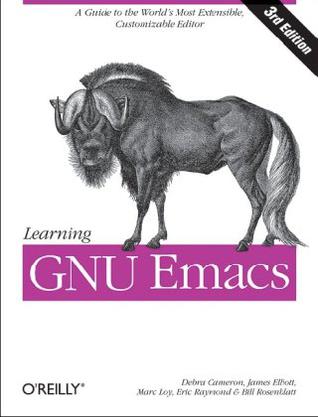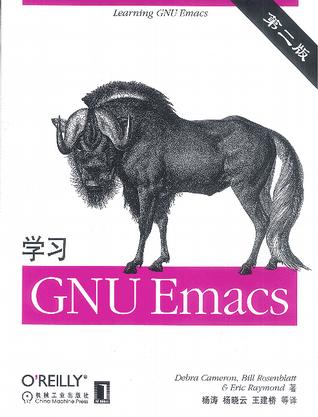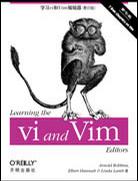-

Learning the vi and Vim Editors
There's nothing that hard-core Unix and Linux users are more fanatical about than their text editor. Editors are the subject of adoration and worship, or of scorn and ridicule, depending upon whether the topic of discussion is your editor or someone else's. vi has been the standard editor for close to 30 years. Popular on Unix and Linux, it has a growing following on Windows systems, too. Most experienced system administrators cite vi as their tool of choice. And since 1986, this book has been the guide for vi. However, Unix systems are not what they were 30 years ago, and neither is this book. While retaining all the valuable features of previous editions, the 7th edition of Learning the vi and vim Editors has been expanded to include detailed information on vim, the leading vi clone. vim is the default version of vi on most Linux systems and on Mac OS X, and is available for many other operating systems too. With this guide, you learn text editing basics and advanced tools for both editors, such as multi-window editing, how to write both interactive macros and scripts to extend the editor, and power tools for programmers -- all in the easy-to-follow style that has made this book a classic. Learning the vi and vim Editors includes: A complete introduction to text editing with vi: * How to move around vi in a hurry * Beyond the basics, such as using buffers *vi's global search and replacement * Advanced editing, including customizing vi and executing Unix commands How to make full use of vim: * Extended text objects and more powerful regular expressions * Multi-window editing and powerful vim scripts * How to make full use of the GUI version of vim, called gvim *vim's enhancements for programmers, such as syntax highlighting, folding and extended tags Coverage of three other popular vi clones -- nvi, elvis, and vile -- is also included. You'll find several valuable appendixes, including an alphabetical quick reference to both vi and ex mode commands for regular vi and for vim, plus an updated appendix on vi and the Internet. Learning either vi or vim is required knowledge if you use Linux or Unix, and in either case, reading this book is essential. After reading this book, the choice of editor will be obvious for you too. -

Learning GNU Emacs Third Edition
The third edition of Learning GNU Emacs describes Emacs 21.3 from the ground up, including new user interface features such as an icon-based toolbar and an interactive interface to Emacs customization. A new chapter details how to install and run Emacs on Mac OS X, Windows, and Linux, including tips for using Emacs effectively on those platforms. GNU Emacs is the most popular and widespread of the Emacs family of editors. It is also the most powerful and flexible. Unlike all other text editors, GNU Emacs is a complete working environment--you can stay within Emacs all day without leaving. Learning GNU Emacs, 3rd Edition tells readers how to get started with the GNU Emacs editor. It is a thorough guide that will also "grow" with you: as you become more proficient, this book will help you learn how to use Emacs more effectively. It takes you from basic Emacs usage (simple text editing) to moderately complicated customization and programming. The third edition of Learning GNU Emacs describes Emacs 21.3 from the ground up, including new user interface features such as an icon-based toolbar and an interactive interface to Emacs customization. A new chapter details how to install and run Emacs on Mac OS X, Windows, and Linux, including tips for using Emacs effectively on those platforms. Learning GNU Emacs, third edition, covers: * How to edit files with Emacs * Using the operating system shell through Emacs * How to use multiple buffers, windows, and frames * Customizing Emacs interactively and through startup files * Writing macros to circumvent repetitious tasks * Emacs as a programming environment for Java, C++, and Perl, among others * Using Emacs as an integrated development environment (IDE) * Integrating Emacs with CVS, Subversion and other change control systems for projects with multiple developers * Writing HTML, XHTML, and XML with Emacs * The basics of Emacs Lisp The book is aimed at new Emacs users, whether or not they are programmers. Also useful for readers switching from other Emacs implementations to GNU Emacs. -

学习GNU Emacs
学习GNU Emacs GNU Emacs是Emacs编辑器家族中最受欢迎、传播范围最广、也是最强大和最灵活的UNIX文本编辑器。与其他文本编辑器的重要区别在于它是一个完备的工作环境,使用Emacs可以完成各种日常工作。本书循序渐进地讲述Emacs的入门知识,随着本书的深入,读者的Emacs使用水平将从初级(只会进行简单的文字编辑)提高到足以完成相当复杂的定制和程序设计任务的阶段。 本书对Emac -

Learning the vi and Vim Editors
《学习Vi和vim编辑器(影印版)》内容为:在过去将近30年的时间里,vi已经成为Unix和Linux的标准编辑器,而从1986年开始《学习Vi和vim编辑器(影印版)》也已成为vi的主要指南。但是现在Unix已经不是三十年前的样子,这《学习Vi和vim编辑器(影印版)》也同样不会是。《学习vi和Vim 第七版》已经进行了扩展,包括了Vim这个主要vi克隆的细节。Vim作为目前绝大多数Linux系统的缺省编辑器和Mac OS X的缺省vi版本,也可以应用于很多其他操作系统。这本指南在讲解文本编辑基础知识的同时,也涵盖了高级工具,例如用交互式的宏和脚本来扩展编辑器的功能——所有这些都用易于理解的方式来传授,这种风格已经让《学习Vi和vim编辑器(影印版)》成为经典。如果你使用Unix和Linux的话,vi和Vim是必备知识,因此,《学习Vi和vim编辑器(影印版)》也是必备之书。你将学到以下内容: · 高效使用vi · 深入讲解vi的知识,例如使用缓存 · 使用vi的全局搜索替换功能 · 定制vi以及运行Unix命令.. · 使用Vim的扩展文本对象和强大正则表达式 · 使用多窗口编辑并且编写Vim脚本 · 发挥图形用户界面版的Vim也就是gvim的全部功能 · 使用Vim的增强功能,例如语法高亮和扩展标签 · 将Vim和其他三个vi的克隆nvi、elvis和vile进行比较